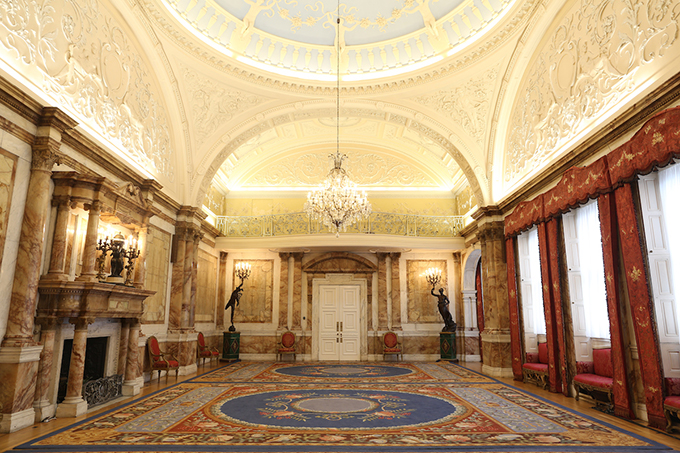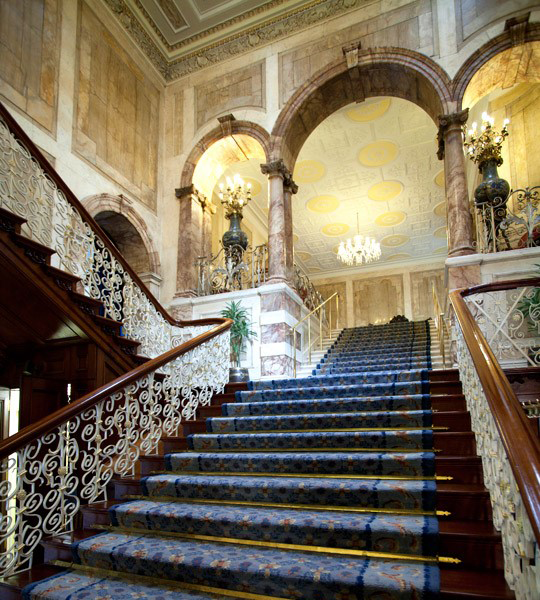Guided tours of Iveagh House
The Department of Foreign Affairs and Trade is delighted to announce that we are opening Iveagh House to the public for guided tours during Heritage Week, Culture Night and Open House Dublin again this year. Members of the public will learn about the fascinating history of the building, and see some of its finest rooms, including the Victorian ballroom and the palatial staircase, considered one of most memorable designs of Irish 19th century interiors.

Upcoming Guided Tours
Guided Tours of Iveagh House will be available as part of Heritage Week, Culture Night and Open House.
Culture Night
On Friday, 21 September there will be guided tours of Iveagh House from 18.00 until 23.00. There will be an Irish language tour at 18.00.
Tours are free, and will be made available on a first come, first served basis.
Details of other Culture Night events are available on culturenight.ie
About Iveagh House

In a city of hidden architectural splendours, Iveagh House, the headquarters of the Department of Foreign Affairs and Trade on 79-80 St. Stephen’s Green, is one of the most compelling attractions among Dublin’s historic houses.
The original house was built in 1736 by the architect Richard Cassels for Bishop Robert Clayton, an Irish Protestant bishop. After Bishop Clayton’s death, the house was known as ‘Mountcashel House’ for a period of forty years, and was home to the first and second Earls of Mountcashel. For a brief period, Iveagh House belonged to the Rt. Hon. John Philpot Curran, a parliamentarian and barrister, whose daughter, Sarah, was engaged to marry Robert Emmet, at the time of the rebellion led by him in 1803.
In 1856, Benjamin Lee Guinness, grandson of Arthur Guinness, acquired the house at a bargain price of £2,500. Three generations of the Guinness family would make it their Dublin home and revive its reputation for splendid entertainment. The creation of the modern Iveagh House began under the ownership of the Guinness family with the acquisition of the house next door, which was dismantled to allow for the expansion of the original town house. Richard Cassels’ design still survives in its main internal features, but has been boxed in on both sides and concealed behind a unified 19th century façade designed by Guinness himself along with several Georgian interior rooms.
An additional series of alterations took place under the architect, J F Fuller between 1880 and 1884, which included the addition of the present splendid double-return staircase. The Ballroom, built in 1896 by the Glasgow-born architect, William Young, is considered one of the finest examples of late Victorian classicism in the country.
In the late 1930s, Rupert Edward Cecil Guinness, the second Earl of Iveagh, offered the house and its gardens to the Irish Nation. The offer was formally accepted in May 1939 and a sale of the contents of the house was held later that year. The house was officially named Iveagh House by the Government and became the headquarters of the Department of External Affairs (today the Department of Foreign Affairs and Trade). Building on a long tradition of society gatherings, Iveagh House continues to serve as a centre for important receptions to mark visits from dignitaries and Heads of State.

